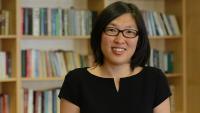Shing Lee

Assistant Professor, Biostatistics
Dr. Lee is an expert in statistical consulting, having assisted numerous investigators from a panoply of health disciplines in the design, conduct, and analysis of clinical and public health studies. At the Mailman School, she looks at the implementation of novel designs for early stage clinical trials. She is particularly interested in the development of new statistical methods for targeted and immunotherapeutic cancer agents such as early development methods that incorporate adverse events types, and grades and allow for different tolerance levels for different severity of adverse events, as well as methods for summarizing toxicity burden in patients
Given that many areas in health work with populations directly, why do you think people go into Biostatistics?
Because it’s a great career. We attract the kind of people who want to do something quantitative but don’t want to become physicians. In Biostats, you can make a tangible impact on health, whether it’s examining the effect of physical exercise on different body systems or determining the right dose for anti-cancer therapies, which is my area of research. There are always new problems to solve and they are always great challenges.
What skills matter most to a biostatistician?
Every biostatistician needs to work in a collaborative environment, advise others on how to improve their study designs. We’re the members of interdisciplinary research teams who make sure the team is using an appropriate design to answer the hypothesis being posed and that the analysis and the results answer the right questions. Being a part of study design from the ground floor through the end is a rewarding feeling, and it’s a role we take very seriously.
Can students have this kind of hands-on collaborative experience?
Absolutely. I teach the Capstone Consulting Seminar and direct the department’s consulting service. The consulting service provides Biostatistics expertise to the entire CUMC campus, whether it’s help with study designs, grant applications, manuscripts, or because the Institutional Review Board recommended that someone from Biostatistics get involved. In my class, students participate in these consultations as part of their course requirements.
What do the students do in the consultations?
They can participate actively or they can sit and listen. Whatever they choose, they’re required to present details to other students when we get back to the classroom. We discuss the advice that was given and consider alternatives as well as the strength and weaknesses of the proposed designs and any threats to the validity of these studies. For many students, it’s their first exposure to real clinical research, and they love it.
Is the field changing before your eyes?
Yes – because medicine is changing. For example, I do a lot of work on toxicities during early development trial design for cancer, where therapies are undergoing great change, from chemotherapy and radiation to targeted and immunotherapeutic agents. These new therapies are prescribed for longer periods and may have very different adverse events profiles that have not been considered before.